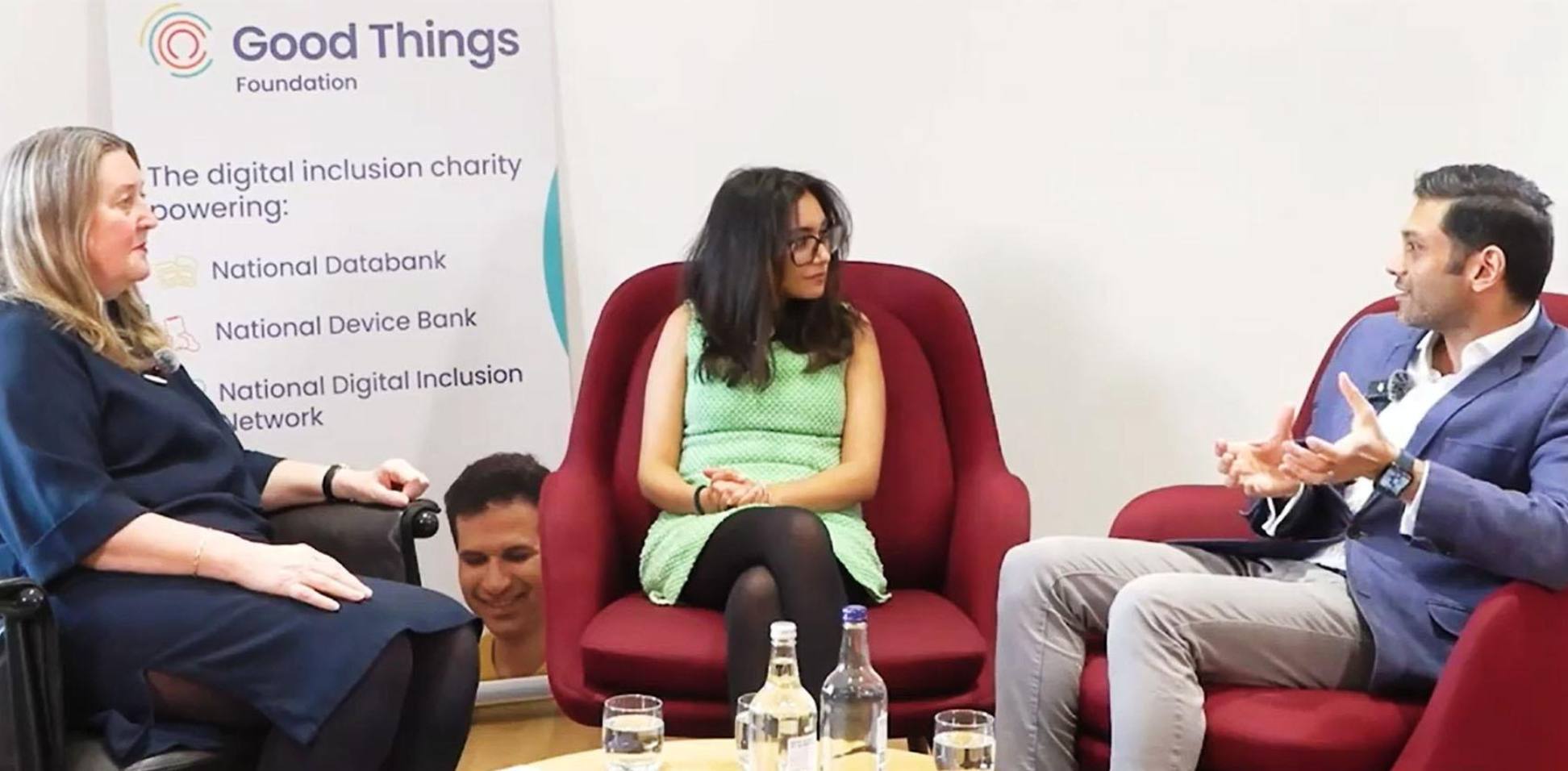From analogue to digital: Tackling inequality and digital exclusion in the future NHS
With the launch of the NHS 10 Year Health Plan, our Head of Research and Data Insights, Katie Heard, reflects on the benefits and risks for those who are digitally excluded, what more can be done and how existing resources can help support further progress.
The NHS is undergoing a radical transformation. The NHS 10 Year Plan promises to be one that is fit for the future, using technology and a neighbourhood approach that promises to empower patients and address inequalities. At the heart of this transformation is the NHS App. The App promises to be the ‘full front door’ and provide a ‘doctor in every pocket’.
The digital divide in UK healthcare
Our experience tells us that despite significant progress with uptake of the NHS App, 31% of the population still don’t access health services online. As shown in Digital Nation 2025, almost 8 million people don’t have the skills that they need to make the most of the online world, and those that are digitally excluded are most likely to be over 65 (77%), have a disability or impairment (69%), or have no formal qualifications (47%) - the population groups who rely most on our NHS.
This digital transformation raises urgent and necessary questions: How do we ensure that no one is left behind, and that health services are accessible for everyone going forwards?
Making the case for change
In our submission of evidence to the consultation for the NHS 10 Year Plan we called for five actions that would demonstrate a commitment to addressing digital exclusion:
- A commitment to promoting digital inclusion as an enabler to adoption of new ways of working amongst patients and staff
- Building approaches that minimise the impact that evolution of the NHS model may have on existing inequalities and exclusion
- Consideration of a cross NHS approach that ensures access preferences are considered at all touch points
- Ensuring that local systems are enabled to deliver joined up funded digital inclusion support
- A commitment to donate redundant technology to the National Device Bank.
Below we reflect on whether these actions have been addressed in the published plan, what more needs to be done, and the tools and resources that are available to support further progress in these areas.
Celebrating success and progress: what the NHS 10-year plan gets right
In the NHS 10 Year Plan, there is much to celebrate that will help address digital exclusion:
- Tailored design: Digital accessiblity is being built into the NHS App by default. Information will be adapted to meet the needs of people from different backgrounds, with translation tools and accessibility features to help all patients engage in their preferred language and format.
- Capturing non-clinical data in the Single Patient Record: Like housing status or caring responsibilities, a Single Patient Record with non-clinical data included could enable the delivery of tailored, co-ordinated care. This approach opens the door for other data to be collected like the digital inclusion needs of individuals, allowing for gaps to be closed that traditional systems overlooked.
- Human support: The NHS will continue partnerships with libraries and local community organisations to help people get set up with the NHS App. ‘App Ambassadors’ will offer one-to-one support, especially in digitally excluded communities.
- Co-creation with patients: The most excluded voices can help shape the future. Patients from underserved communities will help co-design digital tools, ensuring they reflect real-life barriers and needs.
- Support for low digital literacy: Using AI in the NHS App to proactively identify the support needs of individuals and provide targeted support, those with lower digital confidence will be guided to safely and confidently use NHS technology.
- Provision of a one stop shop via Neighbourhood Health Centres: Co-locating health, social, and community services, Neighbourhood Health Centres aim to meet population needs holistically. Bringing VCSE provision such as employment support and debt advice into these spaces will ensure the whole person is supported. This provides the opportunity for digital inclusion support to be co-located to addressing access barriers at point of need. In addition investment in community sport and public health will ensure the digital NHS is anchored in real-world equity.
What more needs to be done
There remains significant risk that those who are digitally excluded will continue to face barriers in accessing digital health services. For all its promise, digitisation risks widening health inequalities if not done inclusively. The plan outlines that the responsibility for much of the transformation sits locally, which risks inequitable roll out and variability in support available. The most disadvantaged communities may find it even harder to access care in a system that is increasingly digital-by-default - rather than desire.
The plan asserts that by shifting power into the hands of patients, this transformation aims to end the class divide in healthcare. Those who previously lacked the resources or confidence to navigate the system will have a ‘doctor in their pocket’ - not just a convenience, but a means to agency.
But the plan fails to describe how this will happen. Whilst there is a commitment in the plan to continue to support the UK’s Digital Inclusion Action Plan (led by the Department for Science, Innovation, and Technology), the plan is light on detail on how people will be:
- Given digital access where poverty and affordability is the barrier to engagement - no device and no internet connection means no access to the NHS App.
- Supported to develop the basic digital skills and confidence to interact with the NHS App and other services. If you can’t switch on a device, connect to the internet, or complete a registration process there is no access to the NHS App.
- Reassured that increasing reliance on data sharing will address their fears about data privacy and security - an individual might have the skills and a device but be fearful about what sharing their data means for their personal safety and security.
- Supported to ensure that the online and offline experience of accessing care and information are equitable - how will the wealth of information in the NHS App be accessed if someone is offline.
- Ensure that they have the numeracy and literacy skills to understand the data and information that will be made available to them so they can achieve the agency that the plan requires to succeed.
Proven tools to advance digital inclusion
Good Things Foundation have identified a range of solutions that could help further support the delivery of the NHS 10 Year Plan and ensure its success, bringing digitally excluded populations along with the transformation. We encourage exploration of the following:
- Online learning content for those with no ro low basic digital skills: Learn My Way, media literacy and Introduction to AI video - all helping people on their journey to become confident, safe and independent users of digital services
- Using our discussion tool to help address concerns around negative belief and trust in using online health services - funded through the VCSE Health and Wellbeing Alliance anc co-designed and developed with digitally excluded populations
- The IT Reuse for Good Charter promotes a ‘reuse first’ approach to IT assets (like laptops and smartphones) and is an opportunity for organisations to give their devices a second life by refurbishing and gifting them to someone who is digitally excluded.
Ensuring that individuals are identified early on their digital inclusion barriers and needs. - The soon to be published digital inclusion simple questions will provide a small set of questions to ask at first point of contact to identify the additional support an individual might need to be included in the digital health future.
A bold, inclusive future for the NHS
This transformation is about more than technology. It's about ensuring that everyone has the opportunity to benefit from this transformation, equally and fairly.
Digital healthcare done right can cut costs, boost productivity, and improve outcomes. But only if everyone can benefit. Through inclusive design, grassroots support, and community-driven implementation, the NHS can turn the digital divide into a bridge toward equality.


